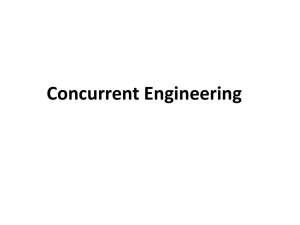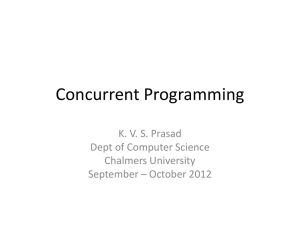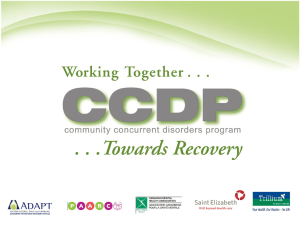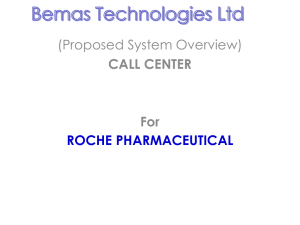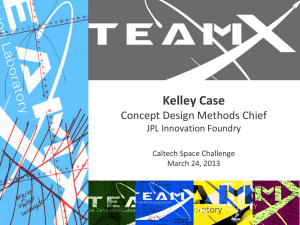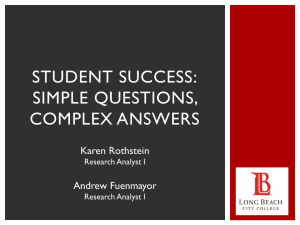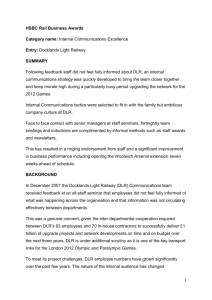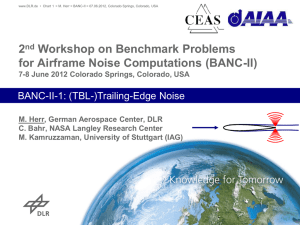DLR-Präsentation Raumfahrt mit Kopf
advertisement
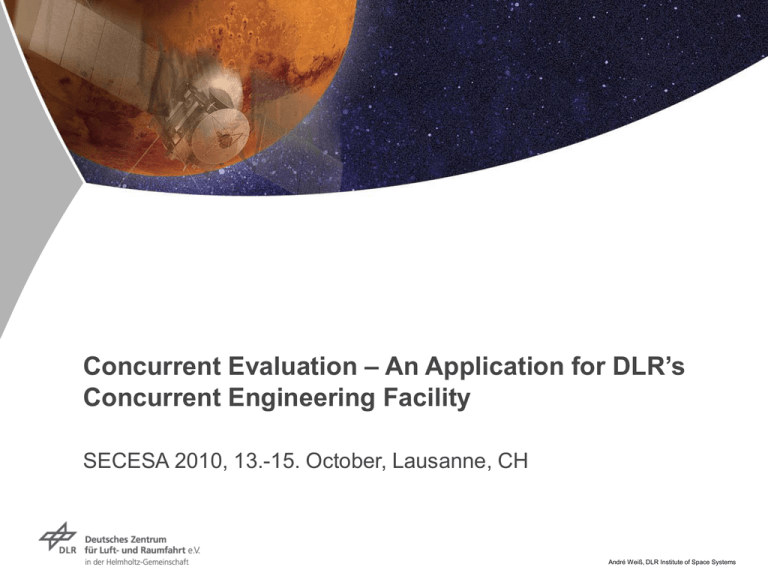
Concurrent Evaluation – An Application for DLR’s Concurrent Engineering Facility SECESA 2010, 13.-15. October, Lausanne, CH André Weiß, DLR Institute of Space Systems Content 1. The Concurrent Engineering Process 2. Concurrent Evaluation – Three Examples • Mission Architecture Definition • Risk Assessment • Mission Extension Evaluation 3. Conclusion Slide 2 André Weiß, DLR Institute of Space Systems The Concurrent Engineering Process Most important features of Concurrent Engineering: • Interdisciplinary Team • Well-defined, Streamlined Approach • Accelerating the Design Process • Responds to Customer Needs • Consistent Level of Understanding • Whole is More Than Sum of its Parts Adapt for Evaluation Purposes Slide 3 André Weiß, DLR Institute of Space Systems Concurrent Evaluation – Example One Mission Architecture Definition Slide 4 André Weiß, DLR Institute of Space Systems Concurrent Evaluation – Mission Architecture Definition Precursor to Concurrent Engineering studies Requirements need to be defined Mission Architecture Definitions result in a 10 to 15 pages long report on the following topics: • • • Science Objectives Science Implementation Mission Design Slide 5 André Weiß, DLR Institute of Space Systems Concurrent Evaluation – Mission Architecture Definition The Process Step 1 • Introduction of the general concept through the customer • Payload and Mission analysis Step 2 • Identification of possible Mission Scenarios Step 3 (iterative for each scenario) • Definition of domain-specific tasks • Evaluation of requirements due to payload or environment Slide 6 André Weiß, DLR Institute of Space Systems Concurrent Evaluation – Mission Architecture Definition SWON – The Prototype Study Objective • Observation of the Solar Far Side wrt Space Weather Implementation • Network of landers on multiple Inner-Earth asteroids Mission Design • Due to lack of experience, a full network mission proved to be not feasible • Alternate mission scenario: Technology demonstrator mission to a single asteroid Additional asteroid research-related payload Slide 7 André Weiß, DLR Institute of Space Systems Concurrent Evaluation – Example Two Risk Assessment Slide 8 André Weiß, DLR Institute of Space Systems Concurrent Evaluation – Risk Assessment Based on Risk Management • Failure Modes and Effects Analysis (FMEA) • Fault Tree Analysis (FTA) Characteristic elements were identified Implemented in the Concurrent Evaluation process Slide 9 André Weiß, DLR Institute of Space Systems Concurrent Evaluation – Risk Assessment The Risk Assessment Process Step 1 • Subsystem and Mission analysis Step 2 • Development of a system map dependencies between components functional relationships Step 3 (iterated for each failure) • Clear identification of failure as well as its effects • Definition of possible solutions or workarounds Slide 10 André Weiß, DLR Institute of Space Systems Concurrent Evaluation – Example Three Mission Extension Evaluation Slide 11 André Weiß, DLR Institute of Space Systems Concurrent Evaluation – Mission Extension Evaluation 53% of exploration spacecrafts exceeded initial mission goals Mission extensions have become quite common The intention: • Streamlining through concurrent approach • Responding to customer needs Optimal “science return / cost” ratio Slide 12 André Weiß, DLR Institute of Space Systems Conclusion Extend the concurrent approach across other phases Done elsewhere: Phase B Concurrent Reviewing Analyzed here: Concurrent Evaluation Adaptation of established methodologies Definition of a new process Slide 13 André Weiß, DLR Institute of Space Systems Thanks for your attention! & Any questions? Slide 14 André Weiß, DLR Institute of Space Systems
